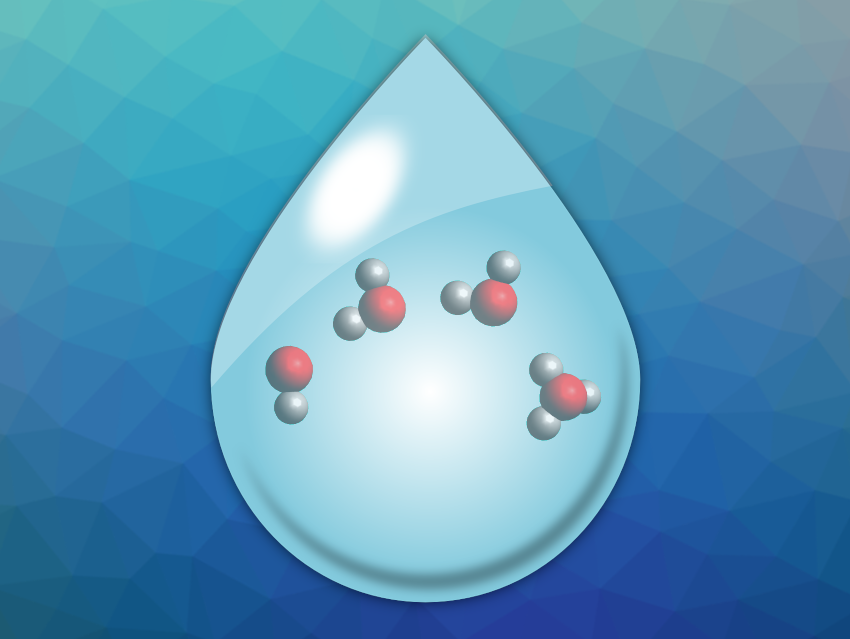Confining a substance within a very small space can change its physicochemical properties. Water, for example, shows different properties when confined to nano-sized drops than in the bulk phase. The confinement can affect phase transitions, viscosity, pH, and other properties. The pH value of pure water is generally determined by the equilibrium between two H2O molecules on one side and a pair of H3O+ and OH– ions on the other. This dynamic equilibrium involves the autoionization of water and the ion recombination. The recombination process is well-understood in the bulk phase, but not in nano-sized droplets of a few hundred to a few thousand water molecules. Below a certain size, the systems are too small to even have a defined pH, because there are not enough water molecules to fully solvate the hydroxide and hydronium ions as in bulk water.
Frances A. Houle, Lawrence Berkeley National Laboratory, CA, USA, William A. Goddard III, California Institute of Technology, Pasadena, USA, and colleagues have investigated the ion recombination process in water droplets with sizes ranging from 100 to 18,000 water molecules (i.e., up to about 10 nm in diameter), using molecular dynamics (MD) simulations and quantum mechanical/molecular mechanical (QM/MM) calculations. The team hoped to understand, for example, how the dynamics of water change depending on the droplet size, how the ions are distributed, and where in the droplet the recombination takes place.
The practical use of full MD simulations is limited to droplets below about 2 nm in size/containing up to a few hundred atoms by the available computing power. Thus, the team used a hybrid QM/MM approach, in which an inner region containing the “reactive” water molecules is described by more accurate quantum mechanical models, and an outer region around them is treated by less computationally demanding molecular mechanics.
Using this approach, the researchers found that the water dynamics in small droplets are fairly bulk-like down to a size of about 2.2 nm, when the self-diffusion of water starts to dramatically decrease due to space restrictions. They also found that the ion recombination is not limited by the size of the droplet or its local structure near the surface, but can be influenced by the shape of the “water wire”, i.e., the hydrogen-bonded network of water molecules, between the ions. The angles between the hydrogen bonds along this water wire affect the recombination, with minimum angles smaller than 120° delaying the recombination, even though the ions can be close together. The team proposes that this could be due to weaker hydrogen bonds at those angles, which disrupt the electronic connectivity along the water wire.
The recombination times are estimated to be around 400 ps on average in a drop of 1,000 H2O molecules and ca. 1 ns on average in a drop composed of 3,000 H2O molecules. Overall, the work provides insights into the microenvironments involved in reactions in water nanodroplets, and it also shows that measurements concerning water ion kinetics and dynamics from bulk samples might still be a suitable basis for understanding at least some nanoscale systems, simplifying the construction of models.
- Recombination of Autodissociated Water Ions in a Nanoscale Pure Water Droplet,
Soonho Kwon, Prabhat Prakash, Yixiang Cao, Frances A. Houle, William A. Goddard,
J. Am. Chem. Soc. 2025.
https://doi.org/10.1021/jacs.4c15103




